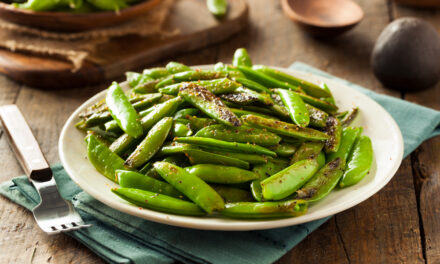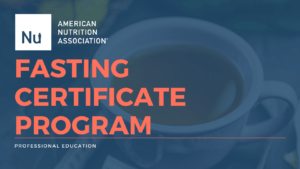Heal Your Gut Faster With These 4 Steps

Healing your gut through fasting makes intuitive sense. If you were to break your leg, for instance, you wouldn’t take twelve different prescriptions and get a cast only to continue running on the leg. You’d rest it.
Our society has a problem with taking any breaks from eating, which you can tell by our skyrocketing rates of obesity and metabolic disease. But this same logic of resting an injured part also applies to healing the gut.
And it’s called fasting.
Fasting has been demonstrated to protect small intestinal stem cell populations from radiation (in mice); it also positively alters the gut microbiome.[1] [2] And apart from the scientific literature, many people with gut issues such as IBS and colitis have turned to fasting for relief – preeminent fasting researcher Krista Varadybeing one of them.
Barring any kidney problems or electrolyte imbalances, fasting should always be the first step in healing the gut.
Heal Your Gut Faster With These 4 Steps
But if you want to expedite the healing process, there are plenty of alternatives you can try on top of fasting!
1 – Go on a low FODMAP diet
FODMAP stands for fermentable oligosaccharides, disaccharides, monosaccharides, and polyols – several different types of sugar that feed bad bacteria. Studies have shown that the restriction of high-FODMAP foods (such as apples, garlic, and onions) is associated with a reduction in IBS symptoms.
A review on FODMAP studies concluded that 86% of individuals who try the low-FODMAP diet find relief from IBS symptoms. [3]
How to start?
Forget about life as usual, at least for a little while. Researchers recommend adhering to a strict list of low FODMAP foods for 4-6 weeks. (Any longer could negatively impact the gut microbiome.) [4]
Don’t forget to talk to your dietician before implementing a low-FODMAP diet!
2 – Break fasts with bone broth
Bone broth is highly digestible, and it’s made up of special amino acids that restore gut integrity. It’s the perfect food to break your fast with and to speed up your gut healing journey.
Research on the effects of bone broth doesn’t exist. That said, there are several components of bone broth that are essential for optimal gut health:
- gelatin
- glycine
- proline
- and glutamine
These amino acids build up healthy intestinal tissue, support the mucous barrier, and also serve as fuel for enterocytes (intestinal cells).[5]
Fasting experts including Thomas Delauer recommend breaking a fast with bone broth as a way to prepare the body for foods that are harder to digest. Instead of diving right into your main course after your daily fast, try heating up a cup or two of bone broth with a pinch of sea salt thirty minutes before eating solid food.
As a side note, shoot for free-range and organic varieties of bone broth. These can potentially limit harmful chemicals such as glyphosate that are found in conventional broths.
3 – Add resistant starches to your diet
In all the years we humans spent foraging on the plains of Africa, we turned up very few loaves of cooked bread or cereals. What we did find (and eat a great deal of) was resistant starch – a miracle food for the gut, scientists are discovering.[6]
Resistant starches (RS) are found in uncooked root vegetables, seeds, and unripe starchy vegetables like bananas. These starches are labeled ‘resistant’ because they resist digestion: we’re unable to use them for energy. But the bacteria in our gut can and do!
Resistant starches are also known as prebiotics because they feed the good bacteria that promote gut health.
Once good bacteria have a supply of prebiotic RS, they produce a valuable short-chain fatty acid called butyrate, which is a primary source of intestinal cell energy.[7] So by adding high RS-containing foods and supplements to your diet, you’re indirectly giving your gut the energy it needs to function properly.
(Green bananas, potato starch, whole grain foods, and cooked-then-cooled rice, beans, and potatoes are all good sources of resistant starch.)
4 – Supplement with specific strains of probiotics
For the most part, the human gut is populated by all the right kinds of bacteria that we need in order to have high-performing guts. But with poor diets and unbalanced lifestyles, the ratio of good to bad bacteria can get seriously skewed.
This imbalance is the root of many intestinal problems.[8]
Adding in resistant starches is a great way to reestablish a healthy balance of probiotic – AKA: good – bacteria. Butif you’ve got your diet dialed in, supplementing with probiotics could be the best option. A review of over 9 studies on probiotic therapy showed a significant reduction in IBS symptoms across 772 IBS patients.[9]
The most clinically studied forms of probiotics are Bifidobacterium, Lactobacillus, and Streptococcus. So if you decide to supplement with a probiotic, make sure it has one or all of these strains. We recommend this Garden of Life soil-based probiotic.





